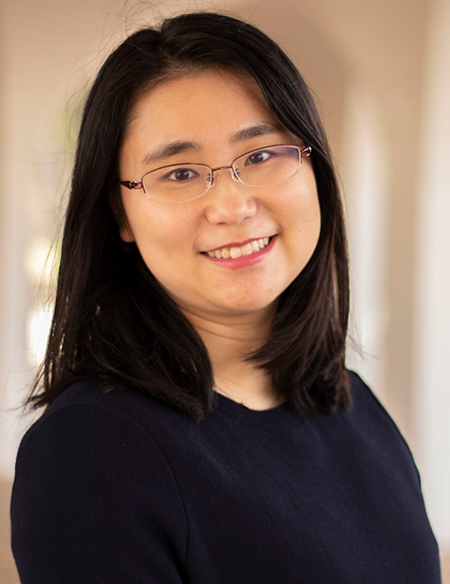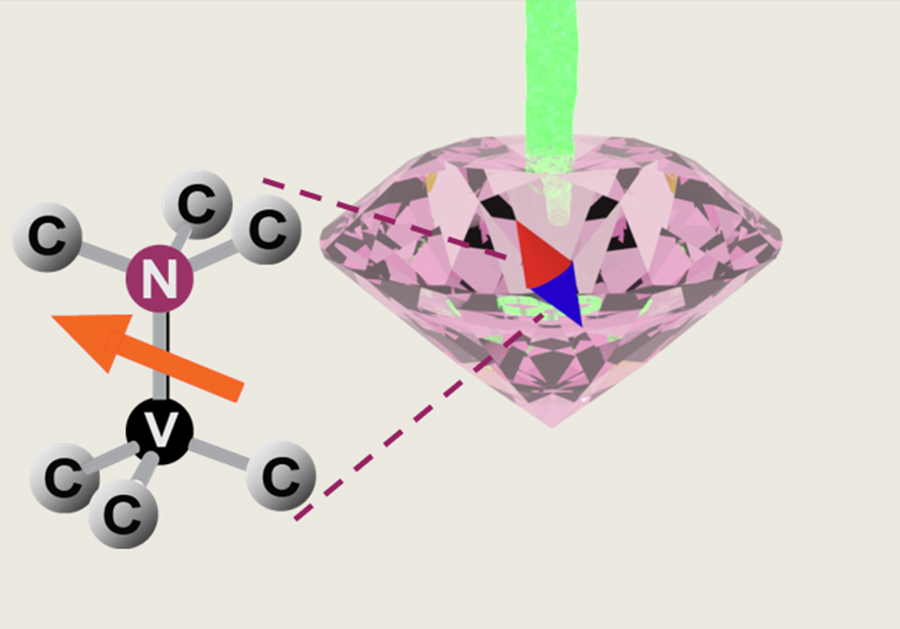Diamonds May Be Award-Winning Physicist’s Best Friend
Physics professor receives Air Force’s YIP prize for her efforts to set quantum sensing in stone
Published Date
By:
- Cynthia Dillon
Share This:
Article Content
The goal of superconductivity is to move charge currents through a material without resistance. This is important in physics and materials science for the future of low-power electronics and quantum technology. For everyday purposes that translates to faster and more efficient laptops and cell phones. UC San Diego’s Chunhui Du is working toward this outcome using defects in diamonds to achieve quantum sensing.

Assistant Professor of Physics and YIP Award Recipient Chunhui Du. Photo by Michelle Fredricks, UC San Diego Physical Sciences.
Out of more than 200 proposals submitted to the Air Force Office of Scientific Research (AFOSR), the assistant professor of physics is one of 36 scientists and engineers from 27 research institutions and businesses in the U.S. whose creative, basic research proposal was recently selected for the Air Force's Young Investigator Research Program (YIP) Award. YIP seeks out individuals who show exceptional ability and promise for conducting basic research of military interest. Du was selected for her brand of “brilliance”—nanoscale quantum sensing, a technique developed by her and members of the Du Research Lab at UC San Diego.
Nanoscale quantum sensing uses quantum probes to measure the properties of materials. The advantage of this is that many quantum objects—for example, a single electron spin, which can function like a tiny magnet—are extremely sensitive to their environmental conditions and can out-perform their classical counterparts.
“Superconductive materials are essential for the development of quantum technology,” said Du. “Ultimately, people are trying to find superconductors that can work at room temperature and in normal environments and can have transformative impact on our daily lives, like our computers and phones running much faster and with lower energy.”
The sensor Du developed is called the nitrogen vacancy (NV) sensor. It is an atomic-sized defect that makes the diamonds pink. It is formed by replacing a carbon atom in diamonds with nitrogen, and introducing a vacancy next to the nitrogen to optimize the extremely sensitive, local magnetic and electrical environment. This technique opens the door to imaging electric and magnetic phenomena with resolutions down to the few-nanometer scale.
With the YIP award—$450,000 over three years—Du will use her NV-centers-in-diamond technique to study novel and unconventional superconductor materials. Typical superconducting materials are formed by cooling down a normal metal to a very low temperature; for instance, aluminum. Cooled to 1° Kelvin, or -457.9°F, it becomes superconductive. Its application potential, however, as with other standard materials, is limited because of the required super-cold temperature. Therefore, finding a more efficient alternative at warmer temperatures is the mission.
“Currently, there is rapid progress in the superconductivity community to discover a new type of superconductor that has a lot of unconventional properties,” explained Du. “For instance, copper oxide material, which is also called cuprate, has superconductivity at higher temperatures, achieved by liquid nitrogen.”
Because superconductivity helps electrical charge move without resistance, making it more efficient with less energy requires innovation beyond current norms of extreme, low-temperature superconductivity, according to Du.

Schematics of the quantum sensing platform based on the S=1 electron spin of the nitrogen vacancy (NV) defect in diamond. It acts like an atomic-size compass that is extremely sensitive to the local magnetic field environment. We can optically initialize and read out the NV spin state. Under a green illumination, NV center generates red fluorescence, which makes the diamond pink in color. Image courtesy of the Du Research Lab, UC San Diego, Physics.
The YIP awardee admits there are challenges to this discovery objective. The fundamental magnetism of superconductive material, for example, remains a mystery. The volume of current two-dimensional, or layered superconductive material, is very small, making it difficult to detect using standard techniques. Additionally, a superconducting device used for quantum computing would be very small in size, so a local technique that enables nanoscale imaging of the spatial aspects of the electronic and magnetic properties of the superconductor is essential. This is where Du’s NV sensor could prove to be effective.
Members of Du’s lab in the Department of Physics, Nathan McLaughlin, Eric Lee-Wong, Hanyi Lu and Gerald Yan, are assisting with this research.
For a full list of YIP awardees, visit the Air Force Research Laboratory website.
Share This:
You May Also Like
Stay in the Know
Keep up with all the latest from UC San Diego. Subscribe to the newsletter today.



